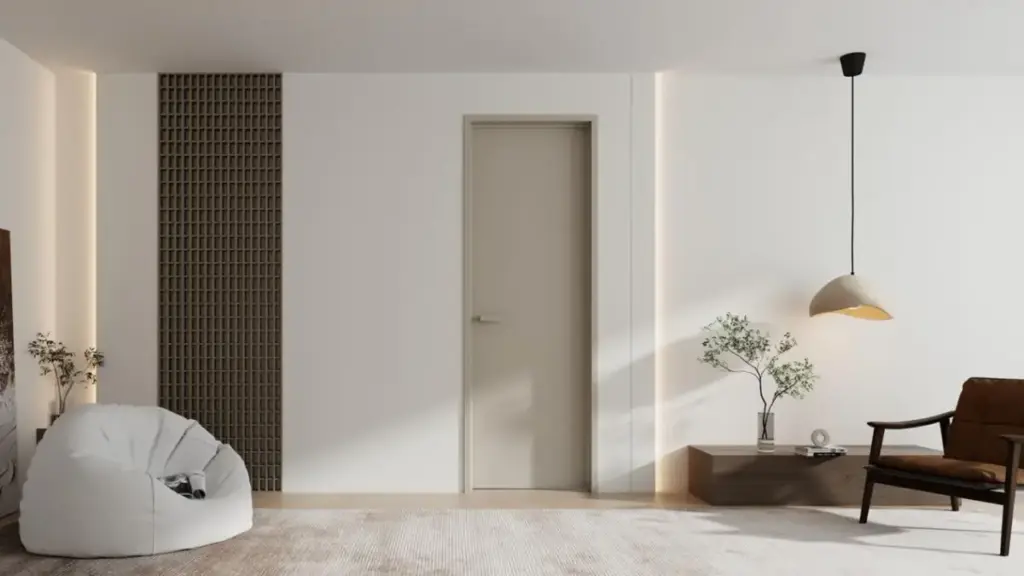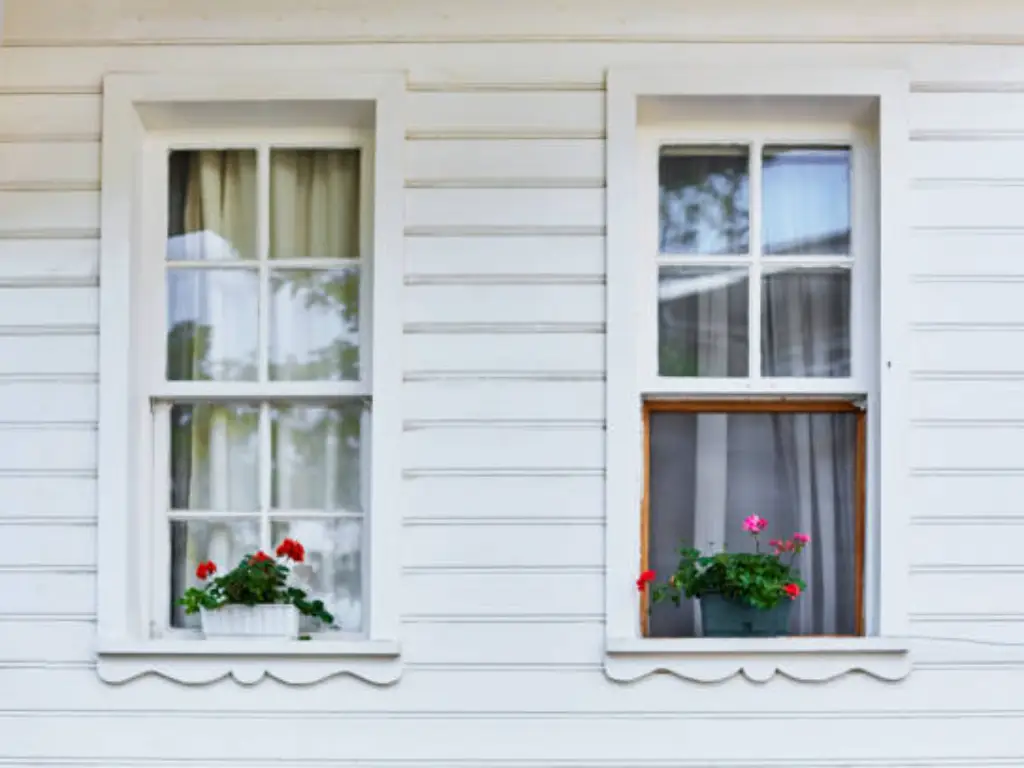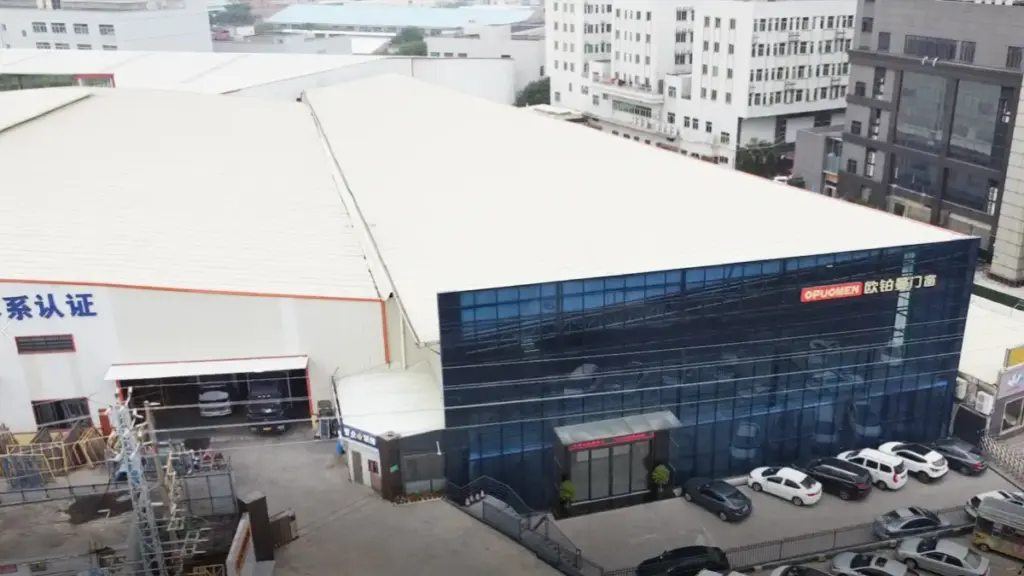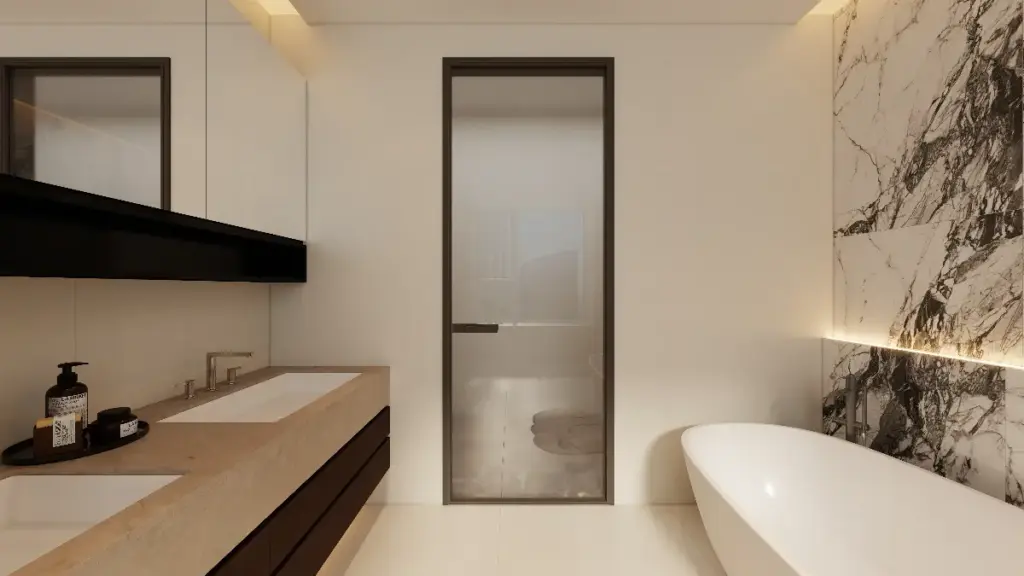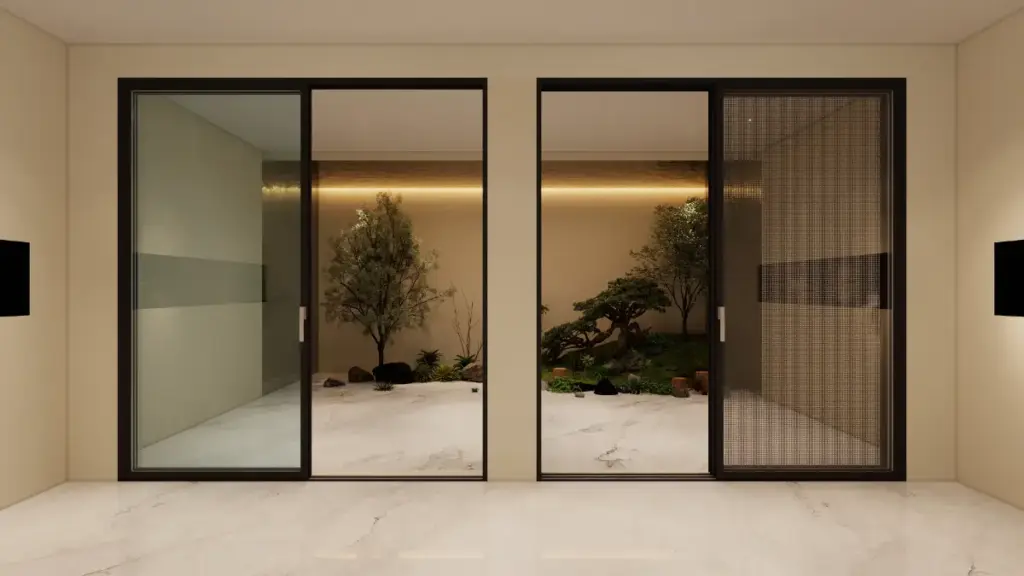Considerando opções de janela para uma nova construção, renovação, ou atualizar? Descubra a janela deslizante vertical, um clássico atemporal reinventado com tecnologia moderna. Este guia é essencial se você é um usuário final que busca a estética ideal, um parceiro de vendas que fornece produtos atraentes, ou um parceiro de negócios priorizando qualidade e valor em seus projetos.
Muitas vezes conhecidas como janelas de guilhotina, esses controles deslizantes verticais oferecem muito mais do que apenas charme duradouro; eles oferecem benefícios práticos que aumentam o conforto, economizar energia, e aumentar o valor da propriedade. Exploraremos como funcionam as janelas deslizantes verticais, mergulhe nas vantagens e desvantagens das janelas deslizantes, e esclarecer os tamanhos típicos de janelas deslizantes verticais.
Como funcionam as janelas deslizantes verticais?
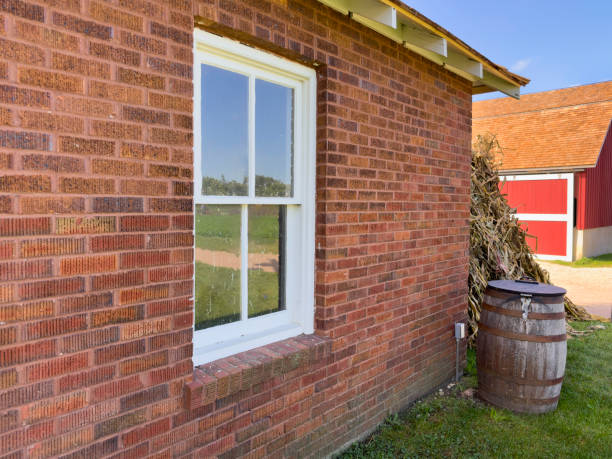
Antes de entrarmos na infinidade de benefícios, vamos entender claramente a mecânica. Como funcionam as janelas deslizantes verticais? É um design bastante engenhoso que resistiu ao teste do tempo, refinado com engenharia moderna.
As janelas deslizantes verticais normalmente consistem em dois painéis principais, chamados faixas, que estão alojados dentro de uma moldura. Essas faixas se movem para cima e para baixo para abrir e fechar a janela.
- Uma faixa é posicionada na frente da outra.
- Eles deslizam um pelo outro em trilhas ou ranhuras paralelas dentro da moldura da janela.
A magia por trás de seu bom funcionamento geralmente envolve um mecanismo de equilíbrio. Historicamente, estes eram sistemas de pesos e polias escondidos dentro da moldura da janela (frequentemente chamado “janelas de caixilho”). Esses contrapesos compensariam o peso da faixa, facilitando o levantamento e permitindo que fique aberto em qualquer altura desejada.
Os controles deslizantes verticais modernos costumam usar sistemas de equilíbrio baseados em molas mais contemporâneos (como balanças espirais ou balanças de mola helicoidal). Estes são mais compactos, exigem menos profundidade de quadro, e oferecem operação consistentemente suave e sem esforço. Você simplesmente destrava a faixa e desliza para cima ou para baixo.
Existem dois principais tipos de janelas deslizantes verticais que você encontrará :
1. Janelas suspensas únicas: Neste projeto, apenas uma faixa (geralmente o de baixo) é operável. Ele desliza para cima e para baixo, enquanto a faixa superior permanece fixa no lugar.
2. Janelas duplas suspensas: Esta é muitas vezes a escolha mais popular e versátil. Com janelas duplas, ambos as faixas superior e inferior podem ser movidas para cima e para baixo de forma independente. Isto oferece maior flexibilidade em termos de ventilação e limpeza.
A capacidade de mover ambas as faixas é uma característica significativa, especialmente quando falamos de ventilação e manutenção, que exploraremos em breve!
A vantagem de deslizar para cima: Uma cascata de benefícios
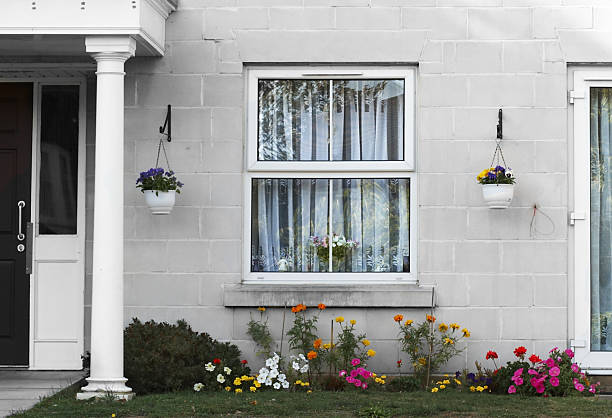
Agora a parte emocionante! Janelas deslizantes verticais são mais do que apenas um rostinho bonito; eles trazem uma riqueza de vantagens práticas para qualquer propriedade.
Superestrelas que economizam espaço: Um dos benefícios mais imediatos é o seu design eficiente em termos de espaço. Porque as faixas deslizam verticalmente dentro da moldura, eles não se projetam para dentro ou para fora quando abertos. Esta é uma grande vantagem para salas onde o espaço é escasso, ou para janelas voltadas para passarelas, Pátios, ou calçadas onde uma janela que abre para fora pode ser uma obstrução. Pense nisso – não se preocupe mais com cortinas ou persianas atrapalhando, ou esbarrar em uma janela aberta! Este design pode economizar até 30% da pegada potencial da janela em comparação com estilos de caixilho.
Ventilation Virtuosos: É aqui que os controles deslizantes verticais duplos realmente brilham. A capacidade de abrir as folhas superior e inferior simultaneamente cria um padrão ideal de fluxo de ar. Você pode abaixar a faixa superior para deixar aquecer, escape de ar viciado perto do teto, enquanto levantar a faixa inferior permite mais frio, ar fresco para entrar por baixo. Esta corrente de convecção natural pode melhorar significativamente a qualidade e o conforto do ar, potencialmente até reduzindo as temperaturas internas em até 8 graus Fahrenheit. Isto significa menos dependência do ar condicionado durante climas mais amenos – uma vitória para o conforto e para as suas contas de energia!
Campeões de eficiência energética: Falando em contas de energia, modernas janelas deslizantes verticais são projetadas com a conservação de energia em mente. Muitos apresentam vidros duplos ou até triplos, que envolve vários painéis de vidro separados por uma camada de gás isolante. Isto reduz drasticamente a perda de calor durante os meses mais frios e ajuda a manter a sua casa mais fresca no verão, minimizando o ganho de calor.. Os EUA. O Departamento de Energia sugere que a atualização para janelas energeticamente eficientes como estas pode levar a poupanças anuais de 10% para 25% sobre custos de aquecimento e resfriamento. Essa é uma economia significativa que aumenta com o tempo!
Segurança e proteção como padrão: Sua paz de espírito é fundamental. As janelas deslizantes verticais vêm equipadas com mecanismos de travamento robustos que fixam as folhas firmemente quando fechadas, melhorando a segurança doméstica. Para famílias com crianças pequenas, um recurso inestimável frequentemente disponível é a opção de instalar restritores. Esses dispositivos limitam até que ponto uma faixa pode ser aberta, prevenção de quedas acidentais, especialmente nas janelas do andar superior, enquanto ainda permite ventilação. Abrir apenas o caixilho superior de uma janela dupla é outra ótima maneira de tomar ar fresco sem criar perigo para os mais pequenos.
Manutenção facilitada: Sejamos honestos, limpar janelas não é a tarefa favorita de ninguém. No entanto, muitas janelas deslizantes verticais modernas, particularmente versões suspensas duplas, vem com um recurso de inclinação. Isso permite que você incline as faixas para dentro, proporcionando fácil acesso para limpar as superfícies internas e externas do vidro, no conforto e segurança de dentro de sua casa. Isto é uma virada de jogo, especialmente para janelas em andares superiores ou em locais de difícil acesso. Uma pesquisa da Associação Nacional de Construtores de Casas descobriu que 73% dos proprietários preferem janelas que sejam fáceis de limpar e manter – e os controles deslizantes verticais podem proporcionar!
Estética versátil: Quer a sua propriedade seja uma encantadora casa de época ou uma elegante construção contemporânea, janelas deslizantes verticais podem complementá-lo lindamente. Seu design clássico, muitas vezes imitando as tradicionais janelas de madeira georgianas, oferece uma estética atemporal. Ainda, com uma variedade de materiais, acabamentos, e opções de barras de vidro, eles podem ser adaptados para se adequar aos estilos arquitetônicos modernos com a mesma eficácia. Eles realmente promovem a integração perfeita com diversos projetos de construção.
Um investimento inteligente (Excelente ROI): Atualizando para novo, janelas deslizantes verticais com eficiência energética não são apenas uma despesa; é um investimento na sua propriedade. Substituindo o antigo, janelas ineficientes podem gerar retorno do investimento (ROI) de aproximadamente 70% para 80%. Este número impressionante é influenciado por fatores como as condições do mercado local e os materiais escolhidos, mas destaca o valor que essas janelas agregam, tornando-os atraentes para potenciais compradores se você decidir vender.
Vantagens e desvantagens das janelas deslizantes
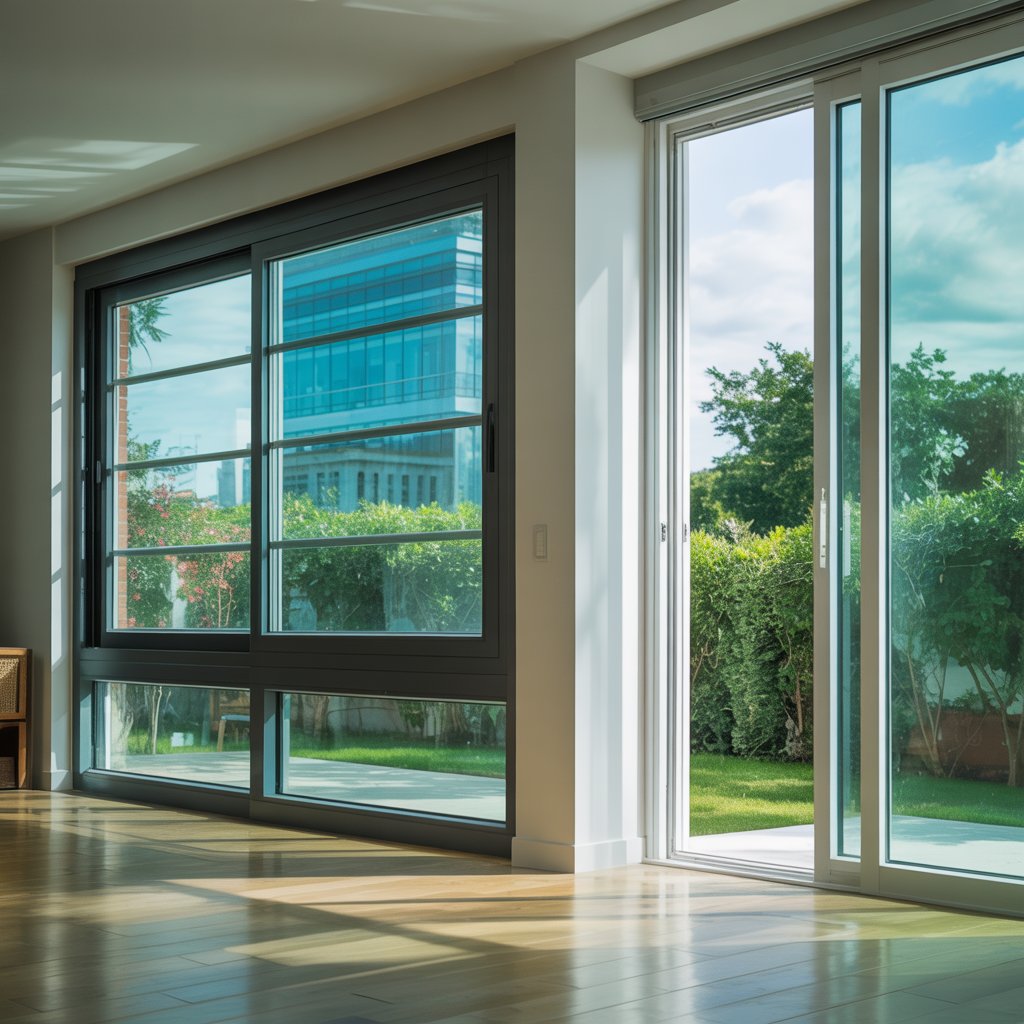
Para lhe dar uma imagem completa, é importante considerar todos os aspectos. Então, vejamos as vantagens e desvantagens das janelas deslizantes, focando principalmente em nossas estrelas verticais, mas também tocando em suas primas horizontais para uma perspectiva mais ampla.
Prós
Muitas das vantagens que já discutimos em detalhes:
- Excelente vedação: Os controles deslizantes verticais bem projetados oferecem um bom isolamento contra correntes de ar e umidade quando devidamente fechados.
- Controle de ventilação superior (Suspenso duplo): A capacidade de abrir faixas superiores e inferiores oferece um fluxo de ar diferenciado.
- Limpeza fácil (Inclinação dupla pendurada): Uma grande comodidade, especialmente para edifícios de vários andares.
- Recursos de segurança infantil: Opções como restritores e abertura apenas da faixa superior proporcionam tranquilidade.
- Estética Clássica & Versatilidade: Adapta-se a uma ampla variedade de estilos arquitetônicos.
- Eficiência Espacial: Nenhum balanço para fora ou para dentro.
Contras
Embora os designs modernos tenham resolvido muitas desvantagens históricas, é bom estar ciente de possíveis considerações:
- Complexidade de instalação (Historicamente): As janelas suspensas tradicionais com pesos e roldanas podem ser mais complexas de instalar, às vezes exigindo mais hardware. No entanto, os sistemas modernos de equilíbrio de mola são mais simplificados.
- Potencial para queda de faixa (Janelas mais antigas/desgastadas): Com janelas muito antigas ou mal conservadas, havia uma pequena chance de o mecanismo de equilíbrio falhar, fazendo com que uma faixa caia. Isso geralmente não é um problema com novos, janelas de qualidade e sistemas de equilíbrio modernos.
- Colocação limitada em alguns cenários: Porque eles abrem verticalmente, operar o caixilho superior pode ser difícil se a janela estiver colocada muito alto na parede, potencialmente limitando as opções de posicionamento em tais casos específicos.
- Eficiência energética (Modelos mais antigos): Embora os controles deslizantes verticais modernos sejam campeões de energia, muito velho, as janelas de guilhotina tradicionais com vidro simples podem não oferecer o mesmo nível de isolamento se não tiverem sido atualizadas ou mantidas adequadamente. Sempre procure as classificações energéticas atuais, como NFRC ou Energy Star.
Uma rápida olhada nas janelas deslizantes horizontais
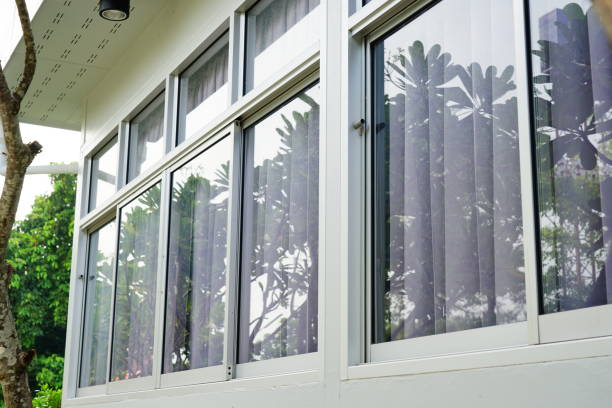
Controles deslizantes horizontais, como o nome sugere, abra deslizando de um lado para o outro.
- Prós: Eles podem oferecer uma ampla, visão desobstruída, especialmente em tamanhos maiores, deixando entrar muita luz natural. Muitas vezes são muito fáceis de operar, às vezes com apenas um dedo, já que não há levantamento envolvido. Sua simplicidade pode torná-los uma escolha versátil para vários locais.
- Contras: Os trilhos dos controles deslizantes horizontais às vezes podem acumular sujeira e detritos, exigindo limpeza mais frequente para garantir um bom funcionamento. Em termos de hermeticidade, alguns projetos podem não vedar tão bem quanto janelas com vedação de compressão de alta qualidade, como caixilhos ou controles deslizantes verticais bem projetados, potencialmente impactando o isolamento térmico em alguns casos.
Para a maioria das aplicações onde o estilo clássico, ventilação equilibrada, e limpeza fácil são prioridades, janelas deslizantes verticais e horizontais, especialmente aqueles pendurados duplos, muitas vezes apresentam um pacote mais abrangente de benefícios.
Entenda os tamanhos das janelas deslizantes verticais
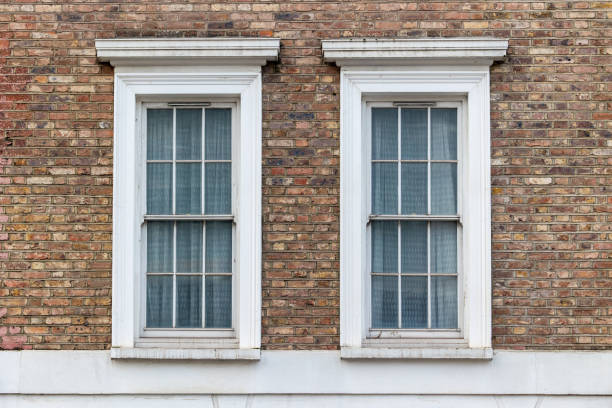
Escolher a janela certa não envolve apenas estilo e função; o tamanho também importa! Quando se trata de tamanhos de janelas deslizantes verticais, há uma boa variedade de opções padrão, além da flexibilidade da fabricação personalizada.
Os fabricantes costumam usar uma notação de quatro dígitos para tamanhos de janelas, onde os dois primeiros dígitos normalmente representam a largura em pés e polegadas, e os dois últimos representam a altura. Por exemplo, uma janela rotulada “2840” pode ser 2 pés 8 polegadas de largura e 4 pés 0 centímetros de altura (32 polegadas x 48 polegadas). Sempre verifique com o fabricante ou fornecedor se a notação se refere ao tamanho aproximado da abertura ou ao tamanho exato da moldura da janela.
Tamanhos comuns de janelas deslizantes verticais padrão: Embora estes possam variar de acordo com o fabricante, algumas alturas comuns para janelas deslizantes verticais (pendurado simples ou pendurado duplo) incluir 24 polegadas, 36 polegadas, 48 polegadas, e 60 centímetros de altura. As larguras padrão também podem variar, muitas vezes variando de 24 polegadas para cerca 48 polegadas.
Alguns tamanhos padrão populares para janelas suspensas duplas ou simples podem incluir (Largura x Altura):
- 24″ x 36″ (2030)
- 28″ x 54″ (2454, no entanto 2852 ou 2'8″ x 5'2″ também é comum)
- 32″ x 66″ (2866)
É importante notar que “janelas deslizantes” como uma categoria ampla também pode incluir controles deslizantes horizontais, que geralmente vêm em configurações mais amplas (Por exemplo, 36″, 48″, 60″, 72″, 84″ largo) e às vezes alturas mais curtas (Por exemplo, 24″ alto). Para nosso foco em controles deslizantes verticais, a altura geralmente é maior ou igual à largura.
Tamanhos personalizados para um ajuste perfeito: E se a abertura da sua janela não tiver uma dimensão padrão? Sem problemas! A maioria dos fabricantes oferece tamanhos personalizados de janelas deslizantes verticais. Isto é particularmente útil para projetos de substituição onde é necessário ajustar uma abertura existente, ou para projetos arquitetônicos exclusivos que exigem dimensões fora do padrão. Embora os tamanhos personalizados possam ter um custo um pouco mais alto e um prazo de entrega mais longo do que os tamanhos padrão disponíveis no mercado, garantem um ajuste perfeito e a estética desejada.
Fatores que influenciam a escolha do tamanho: O tamanho ideal da janela depende de vários fatores :
- Tamanho da sala e altura do teto: Salas maiores com tetos mais altos geralmente podem acomodar janelas mais altas e mais largas.
- Requisitos de luz natural: Mais área de janela significa mais luz natural.
- Necessidades de ventilação: Seções operáveis maiores permitem mais fluxo de ar.
- Estilo arquitetônico e proporções: As janelas devem ser proporcionais ao design geral do edifício.
- Códigos de construção: Os códigos de construção locais podem ter requisitos mínimos de luz e ventilação, ou para saída (escapar) nos quartos. Por exemplo, uma janela de quarto normalmente não deve ser instalada mais do que 44 centímetros acima do chão.
Quer você opte por um charmoso, controle deslizante vertical menor para adicionar personalidade a um banheiro ou a uma série de altura, elegantes para inundar uma sala de luz, há um tamanho adequado à sua visão.
Assuntos materiais: Enquadrando sua visão
O material da moldura das suas janelas deslizantes verticais desempenha um papel crucial no seu desempenho, aparência, manutenção, e custo. Aqui está um rápido resumo das opções comuns:
- UPVC (Cloreto de polivinil não plástico): Uma escolha muito popular, uPVC é conhecido por sua durabilidade, excelentes propriedades de isolamento, e baixos requisitos de manutenção (não é necessária pintura!). É resistente ao apodrecimento e à corrosão e geralmente vem em várias cores e acabamentos, incluindo efeitos de grão de madeira. Geralmente é a opção mais econômica.
- Madeira: Oferece um clássico, beleza atemporal e é um isolante natural. Molduras de madeira podem ser pintadas ou tingidas para combinar com qualquer decoração. No entanto, eles exigem manutenção regular (pintura ou selagem) para protegê-los da podridão, decadência, e clima severo. Isso os torna uma escolha de maior manutenção e muitas vezes mais cara inicialmente.
- Alumínio: Extremamente forte e durável, molduras de alumínio são resistentes à ferrugem e corrosão, tornando-os ideais para áreas costeiras ou climas adversos. Eles podem ter perfis finos, permitindo áreas de vidro maiores e um visual moderno. Tradicionalmente, o alumínio era menos isolante, mas as janelas modernas de alumínio muitas vezes incorporam “rupturas térmicas” para melhorar a eficiência energética.
- Composto: Estas molduras combinam materiais, como madeira internamente para estética e alumínio ou GRP (Plástico Reforçado com Vidro) externamente para durabilidade e baixa manutenção. O seu objetivo é oferecer o melhor de vários mundos – a aparência da madeira com maior resiliência e manutenção mínima. Eles normalmente são uma opção premium.
Cada material tem seu próprio conjunto de vantagens e desvantagens de janelas deslizantes em termos de custo, longevidade, e cuidado. Sua escolha dependerá do seu orçamento, preferências estéticas, clima local, e quanta manutenção você está preparado para realizar.
O deslizamento inteligente para uma propriedade melhor
As janelas deslizantes verticais oferecem uma combinação atraente de elegância clássica e desempenho moderno. Desde o seu design que economiza espaço e capacidades de ventilação superiores até à sua eficiência energética, segurança aprimorada, e facilidade de manutenção, os benefícios são claros e substanciais.
Para usuários finais, eles prometem um ambiente mais confortável, seguro, e belo ambiente de vida, com a vantagem adicional de potencial economia de energia e um sólido retorno do investimento. Para nossos valiosos parceiros de vendas, entendendo esses benefícios, sabendo como funcionam as janelas deslizantes verticais, e estar familiarizado com os tamanhos comuns de janelas deslizantes verticais e as opções de materiais permite que você oriente os clientes com confiança para uma excelente escolha. E para nossos estimados parceiros de negócios em desenvolvimento e construção, incorporar janelas deslizantes verticais de alta qualidade significa entregar projetos com maior apelo, valor duradouro, e ocupantes satisfeitos.
Eles são mais do que apenas uma abertura na parede; eles são um recurso que pode definir uma sala, melhorar o desempenho de um edifício, e trazer satisfação diária. Então, se você está procurando uma solução de janela que realmente deslize acima do resto, a janela deslizante vertical certamente merece consideração séria!

